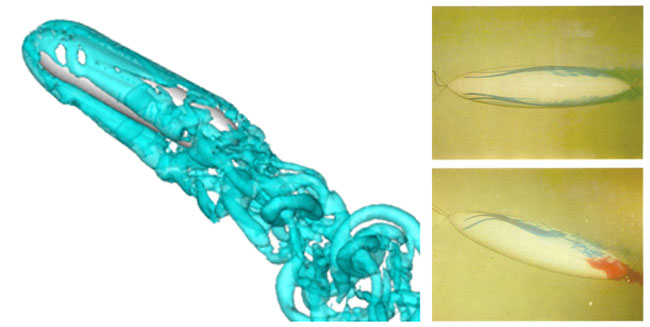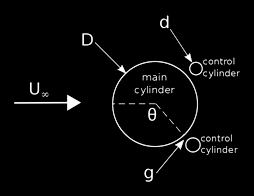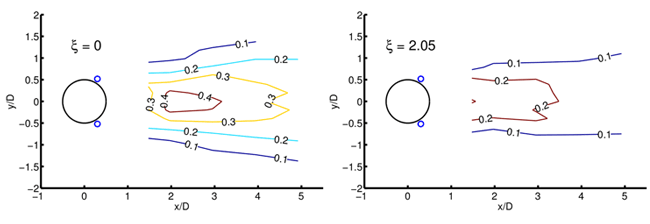Flow Separation Control with Rotating Cylinders
Introduction
Flow separation dominates the hydrodynamic forces on bluff bodies, so efficient separation control has been and continues to be an area of intense investigative effort. Even streamlined bodies, such as many ocean vehicles, experience flow separation when maneuvered sharply or subjected to unsteady flow fields. Active separation control strategies, which require power input, have been shown to effectively reduce drag. This area of researchconsiders active flow separation control with rotating control cylinders. The control cylinders are rotated to inject momentum into the slow-moving boundary layer flow of a larger body near the point of flow separation. This momentum injection delays flow separation and reduces drag. The control effort is expressed by the rotation parameter, ξ, which is the ratio of the surface speed of the control cylinders to the free stream velocity.

In the above left image, simulated vortex separation occurs on a streamlined submersible shape with a 30 degree drift angle. In the above right image, vortex separation is visualized in water tunnel experiments at a 20 degree drift angle(image adapted from Han and Patel, 1979).
Experiments in rotating cylinder separation control

Rotating cylinders are positioned at 120 degrees to the upstream stagnation point of a circular cylinder. The control cylinders are rotated with servomotors to delay flow separation and reduce drag.

Contours of velocity fluctuations measured using laser Doppler velocimetryare plotted for the experiment at Re = 52,000. Rotating control cylinders in the right image delays separation and reduces drag by 20%, which is apparent in the reduction of both the area and intensity of fluctuating flow in the wake.